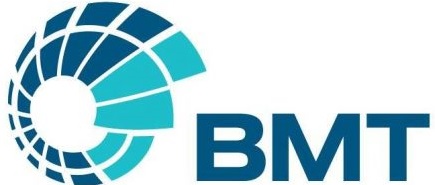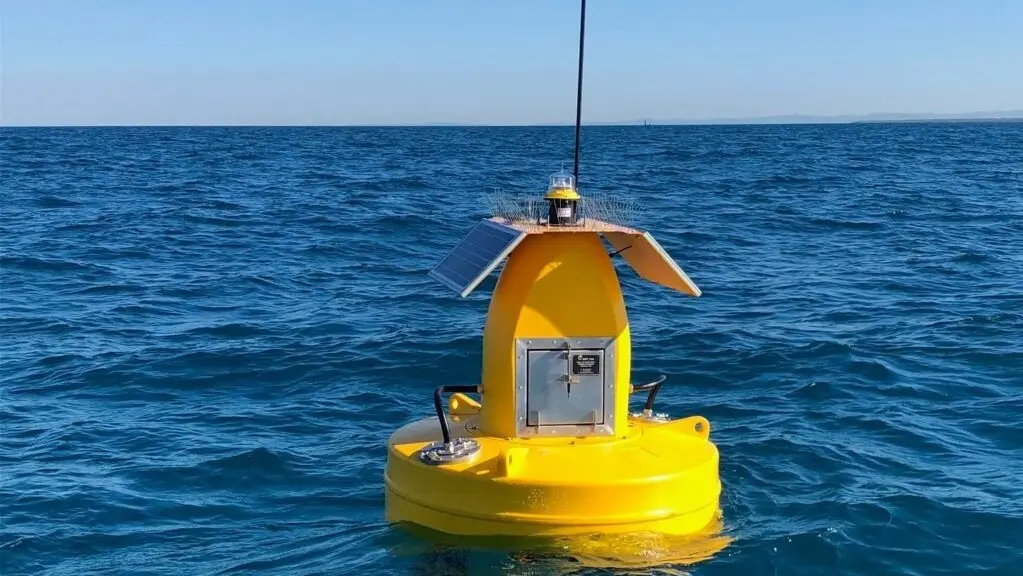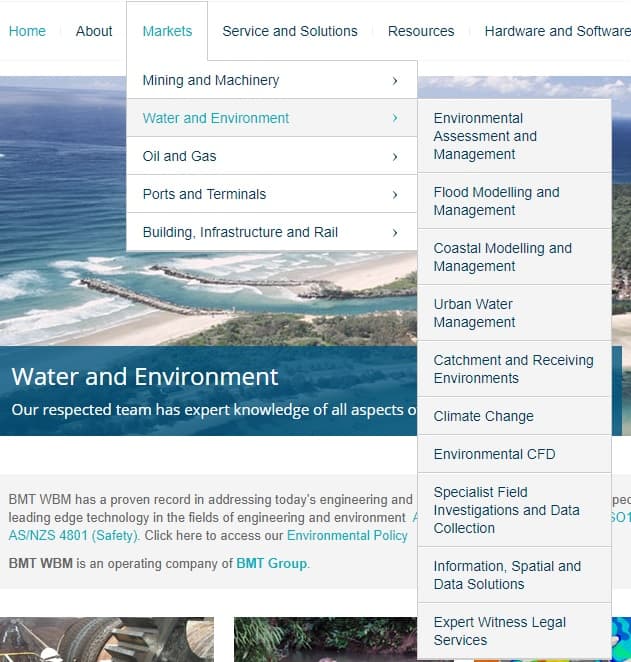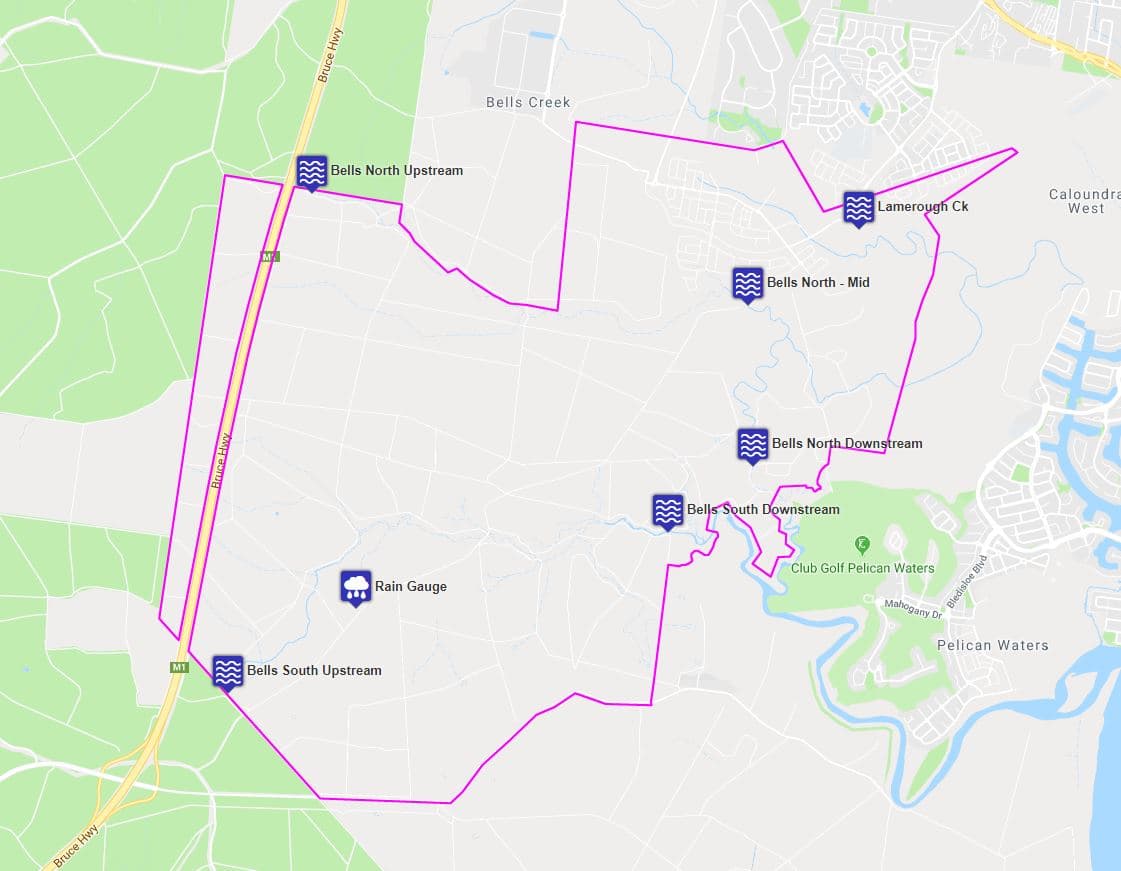BMT — Marine and Environmental Engineering & Monitoring

The Challenge
BMT is one of the largest marine and environmental engineering consultancies in the world. They provide engineering and monitoring services to clients in construction, mining, and environmental management. Water is a key market, including:
- Environmental assessment and management
- Flood modelling and management
- Coastal modelling and management
- Urban water management
- Catchment and receiving environments
BMT started offering services in water monitoring projects providing real-time telemetered data in 2010. As their expertise grew, the complexity of the monitoring projects expanded, including dredging and construction site monitoring from 2016. A key factor common to many water-related environmental projects is monitoring turbidity.
BMT won a series of high profile contracts around turbidity monitoring, such as:
- Tipplers Passage dredging (2016) and Cabbage Tree Point dredging (2017) for the Gold Coast Waterways Authority,
- Spitfire Banks dredging (2018) for the Sunshine Coast Airport Expansion Project,
- They are currently collecting baseline water quality monitoring data for the Outer Harbor Channel Widening project in Adelaide.
BMT also undertake turbidity monitoring for Stockland at their Aura Project in Caloundra (see map of monitoring sites below).
 Image 1. BMT Water turbidity monitoring buoy. Spitfire banks dredging, 2018. Sunshine Coast airport expansion
Image 1. BMT Water turbidity monitoring buoy. Spitfire banks dredging, 2018. Sunshine Coast airport expansion

Image 2. A view of BMT’s water related businesses
The Software Journey
Vendor software solution: Initially, data from remote sites was manually downloaded and stored on a desktop computer in BMT offices. Dataloggers were individually polled using Campbell Scientific Desktop software ‘Loggernet’.
As commercial opportunity grew, so did the pressure to build capability in terms of environmental monitoring software. BMT won multiple water monitoring contracts for more demanding monitoring, at dredging and construction sites, in creeks or coastal areas which put operational pressure on the team and the rudimentary data platform solution.
Clients demanded that BMT be able to present the live data on a website, visualise this data in real time, undertake complex analysis on the live data and send out SMS alerts to selected project stakeholders.
Structural limitations: Delay aside, the website was rudimentary. In terms of data mining and visualisation capability was limited. It was impossible to export data, zoom on data or view data in a map/GIS layout, create reliable smart alerts, or securely share data with different user permissions.
Data management was time-consuming. Someone had to manually connect to each data logger once a week and extract data manually into a spreadsheet. Insights gained from data were often stale, and too late to act upon. Correcting data with offsets, or generally managing data quality was a struggle.
Setting up users and user groups permissions was uneasy and represented another delay and limitation of the workarounds.
The Solution
 Image 3. Turbidity Monitoring dashboard view – Stockland Aura project, Caloundra
Image 3. Turbidity Monitoring dashboard view – Stockland Aura project, Caloundra
Around mid-2017, Brad Grant – Principal Environmental Scientist at BMT, heard about eagle.io from a fellow attendee during a Campbell Scientific training session in Brisbane. Mr Grant said of his first introduction to eagle.io that it “was the solution that we had been looking for”.
Here is an overview of the technical solutions they adopted,using the turbidity monitoring for Stockland at their Aura Project at Caloundra as an example.
- Sensors – Observator turbidity sensors.
- Data loggers – Campbell Scientific data loggers.
- Gateway – Dataloggers connect to 3G/4G modems with static IP address. Using eagle.io to regularly download the data remotely using TCP Client.
- Alerts –When alerts are triggered on Eagle.io data feeds, emails and SMS sent automatically to project team members.
Adopting eagle.io has facilitated the set up and running of projects, particularly when it comes to dredging and construction water monitoring alerts.
Sites are quick to set up, data is easy to edit and configure, alerts going out seamlessly to the right people.
Mr. Grant says, “For example we have a project on the Sunshine coast (Aura), Turbid monitors discharge water quality from sediment basins while we monitor downstream water quality. If readings go higher than a certain point, we must notify quickly. Previously that was a bit haphazard with calls and emails. Now it’s centralised, and goes all out, to every relevant party.”
The Outcome
One of the key outcomes achieved through the implementation of eagle.io was increased responsiveness and ease of use:
Setting up was “surprisingly easy”. When setting up the first monitoring site with 8 buoys/ data sources, Brad Grant the Principal environmental scientist reports to have spent 15 minutes with the eagle.io on-boarding team, then two more hours connecting and configuring the monitoring platform for the 8 sites.“Which was not a huge amount, but it was a step change for us to be able to set them all up in an hour, 2 hours maximum, where it used to be one week when done through the internal workaround.”
- Holistic and enhanced capability: BMT also gained in reputational value, with quicker turn-around times, additional flexibly for their clients’ projects, supply of smart alerts, and a much more comprehensive data management and visualisation suite. “To be able to do so much more with the data, but I could not put a dollar amount on that.”
- Versatility: BMT used Eagle.io to set up GPS based alerts to “geofence”their turbidity monitoring buoys, so as to be alerted should one break anchor and drift outside of GPS area tolerances set. A versatility that turned out valuable in real life already.
“It is not a discrete, deliberate feature, but we set up that kind of GPS based alert for all our buoys using Eagle.io. It came in handy early 2018, when one of the buoys went astray. We got a message 30 minutes later, got on a boat within a few hours, and could retrieve it as it was drifting towards NZ. Without that feature we would have probably lost about $60k worth of equipment,” says Brad Grant. - Automation: Both on the data acquisition side and the notifications side of the communication chain, eagle.io replaced a manual process with an automated one. Instead of regular manual logins to extract data, the system records and stores time-series data automatically for historical and real-time visualisation.
Instead of unreliable manual SMS send-outs when an alert was triggered, eagle.io allows for automated notification of all stakeholders, inreal-time, from a centralised enterprise grade, always on, notification engine. - Time and cost savings: “It saves a lot of time internally. Before, if we wanted to change a site, or a parameter, we would need to get a developer to change that, and it would take days. Reactivity aside, we probably saved $100k in labour costs alone,” says Mr Grant.
What BMT Has to Say
Brad Grant, Principal Environmental Scientist at BMT Brisbane said:
“eagle.io has probably saved us easily $100k in the last year alone in internal costs, time we saved by being able to do what we needed without requiring a developer.”
“My favourite feature is the dashboard, being able to set up what you need, it’s straight forward and powerful, easy, in one spot.”
“Setting up data sources for a whole site, in 1-2 hours was a step change for us, it used to take us about a week when done internally with our team of developers and labour-intensive process.”
“Adopting eagle.io enhanced our customer satisfaction, alerts are better managed, seamlessly, from a centralised place and we get less complaints.”
“eagle.io was the solution we had been looking for.”